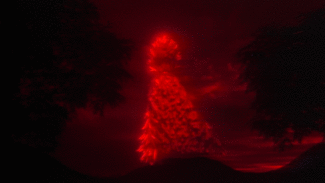
Video Room: Glicéria Tupinambá and Alexandre Mortagua GLICÉRIA TUPINAMBÁ AND ALEXANDRE MORTAGUA
Dates : Vendredi 20 octobre 2023 - Dimanche 3 décembre 2023
Adresse : , Avenida Paulista, 1578 – Bela Vista, 01310-200 São Paulo
Avenida Paulista, 1578 – Bela Vista
São Paulo-SP
01310-200
Brésil
Description, horaires...
MASP – Museu de Arte de São Paulo Assis Chateaubriand presents, from October 20 through December 3, 2023, on the 2nd underground floor of the museum, Video Room: Glicéria Tupinambá and Alexandre Mortagua, with the premiere of the feature film Quando o Manto fala e o que o Manto diz [When the Cloak Speaks and What the Cloak Says] (2023). Curated by Renata Tupinambá, curator-at-large of indigenous art at MASP, the film shows the process by which Glicéria makes the Tupinambá feather cloak, demonstrating the power of this ancestral technology in contemporary times and reinforcing the female perspective and the leading role of indigenous women. The documentary was produced by FILMES D'O BAILE.
When the Cloak Speaks and What the Cloak Says is centered on the Tupinambá cloak created by Glicéria. The film, accompanied by the artist's reflections, records different stages in the construction of the piece, such as the making of the net that serves as the structure and the application of native bird feathers.
The garment, used in rituals, is a symbol of the memory and resistance of the indigenous Tupinambá people. Today, eleven remaining cloaks produced during Brazil's colonial period are known to exist. All of them are in Europe, in museums in Denmark, Switzerland, Belgium, France and Italy. In June 2023, the National Museum of Denmark announced the return of a Tupinambá feather cloak, which will become part of the collection of the Museu Nacional - UFRJ, in Rio de Janeiro.
Curator Renata Tupinambá comments on the relevance of the garment: “The cloak is a witness to the genocide of a nation, and what it says in a universe of subjectivities and mysteries is that these people and their culture are alive, capable of adapting, bringing their knowledge and science to the world. In the midst of violence, racism and persecution of the Tupinambá and their leaders in indigenous territory, it is also a message of strength, resistance and the possibility of being reborn every day.”
The audiovisual work also reinforces the female perspective and the leading role of indigenous women. Guided by her intuition, her dreams and her sensitivity, the artist highlights the power of the narrative brought by the voice of the Tupinambá cloak from Serra do Padeiro under her cosmogonic and artistic vision. “The cloak is life that pulses, that flows in rivers and manifests itself in many forms, feathers that fly beyond matter,” reflects the curator.